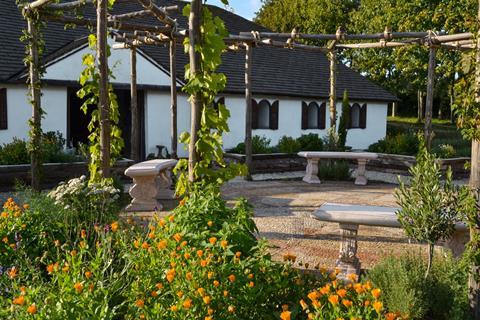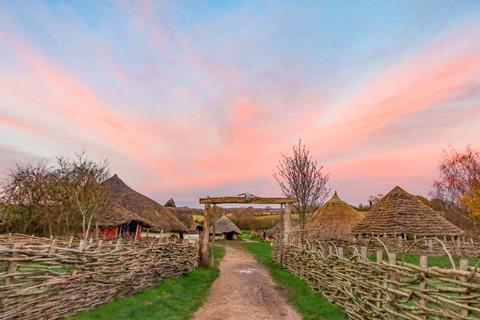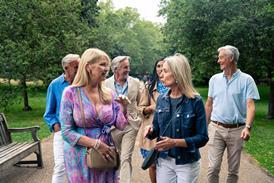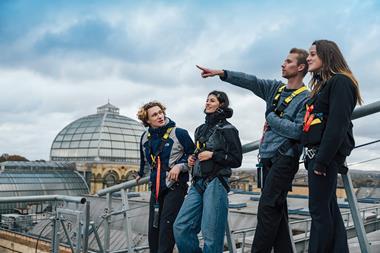The Duke of Gloucester has opened a new garden at the Hampshire-based open air museum, offering groups a glimpse into the horticultural habits of the Romans and the types of plants available to them.

The royal visit coincided with celebrations to mark the 20th anniversary of the construction of Butser’s villa which is based on the archaeology of Sparsholt Roman Villa near Winchester.
To celebrate the milestone, a project was launched to create a formal Roman garden in front of the villa, representing the types of garden features and plants present in Romano-Britain.
“One of my favourite features in the garden is the rosemary hedging, not only does it smell beautiful, but it was also an important herb in Roman times.”
Kathryn Bingham, garden volunteer
The new garden at the farm near Chalton, includes sweet chestnut pergolas, stone benches, urns, raised flower beds and opus signinum paths, all elements known to have featured in Roman gardens, as well as a huge mosaic in the centre.
Rachel Bingham, Butser Ancient Farm creative developer who led the garden and mosaic project, said: “It’s been a huge amount of work and a labour of love for the many staff and volunteers involved in bringing the vision to reality. The creation of the mosaic alone took over 300 volunteer hours of labour with an estimated 10,000 tesserae used in the design.”

The centrepiece was created by a team of volunteers using genuine Roman tesserae. These tesserae were originally part of a villa complex that happened to be in the path of the construction of the M4 motorway near Swindon in the 1970s.
The original villa build, which the garden now sits in front of, was featured in a documentary series for the Discovery channel called Rebuilding the Past – something that hadn’t been attempted for 1,600 years.
Following the tour of the farm, which included seeing timber framing and metal-smelting in action, The Duke of Gloucester officially opened the garden and mosaic, with groups now able to book tickets to visit.

Kathryn Bingham, Butser Ancient Farm garden volunteer, said: “It’s been fascinating to research and explore the types of plants the Romans used and brought to this country almost 2,000 years ago - many of which we still use for the same purpose today.
“One of my favourite features in the garden is the rosemary hedging, not only does it smell beautiful and attracts the bees and butterflies, but it was also an important herb in Roman times, known as the herb of memory and the renewal of energy.”
Group visits to Butser Ancient Farm
Butser Ancient Farm is an open-air experimental archaeology museum and active research centre, covering the Stone Age, Bronze Age, Iron Age Celts, Roman, Anglo-Saxon and Viking eras.
Self-guided visits can be organised, but those who would like a more in-depth experience can book a guided tour and group lecture with an expert.

The team is also able to offer a guided experimental archaeology activity to accompany the visit, such as spinning wool from the resident sheep, carving chalk lamps or making plant fibre cordage (additional cost applies).
Other perks include free parking for coaches and minibuses, free entry for the group organiser, plus exclusive private entry and tours to the farm outside of normal opening hours.
For more information about group visits to Butser Ancient Farm, visit www.butserancientfarm.co.uk.












